Back up IMAP
This guide explains how to back up mailboxes on an IMAP mail server to a local or network destination.
To create an IMAP backup task:
- Open BackupAssist 365.
- Select Create new from the left menu.
- Click the IMAP tile.
- Name your task.
- Enter a name into the field provided.
- Click Multi-User or Single-User.
- Click the tick to save and proceed to the next step.
- Login.
- Enter the mail server's domain name into the Server name field.
- Select the type of security the mail server uses from the Security field.
- Enter the port used by the server for email.
- If you selected Single-User, your mail account's username and password.
- Click the tick to save and proceed to the next step.
- Mailboxes.
- Provide mailbox and authentication information using one of the following options:
- Select Use a CSV file on the bulk update mailboxes tab and upload a CSV file with a list of email addresses and passwords.
- Select Use clipboard on the bulk update mailboxes to copy the mail addresses and passwords out of a CSV file and click the Update list button to paste them into the UI.
- Select Add a Mailbox tab to manually enter the username and password from the CSV into the UI.
- Select the mailboxes to be backed up.
- Click the tick to save and proceed to the next step.
- What to download.
- Use the Choose a preset range to select a time period or the Custom date range fields to enter your own date range.
- Click the tick to save and proceed to the next step.
- Save to...
- Enter a Local folder or Network folder location into the fields provided.
- Click the tick to save and proceed to the next step.
- Schedule.
- Choose a Schedule type to set how often the backup task will run.
- Set a Start time for the task.
- Click the tick to save and proceed to the next step.
- Save and run.
- Click Save and your task will run at the scheduled time.
- Click Save and run to save the task and run it now.
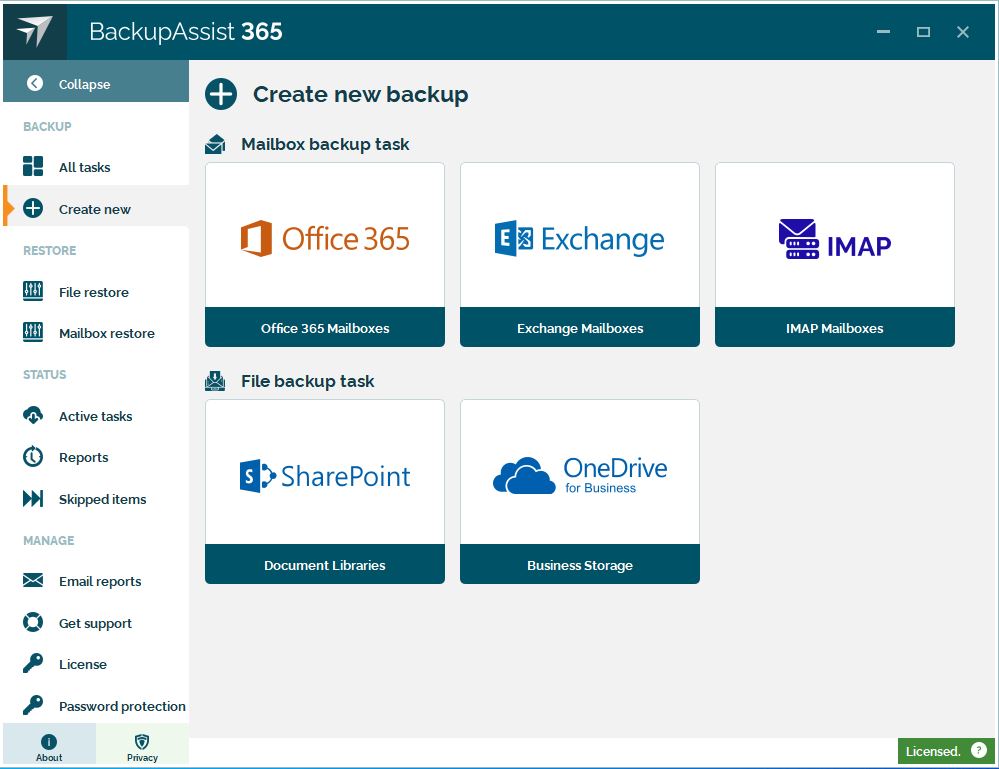
Provide the task's name and type as follows:
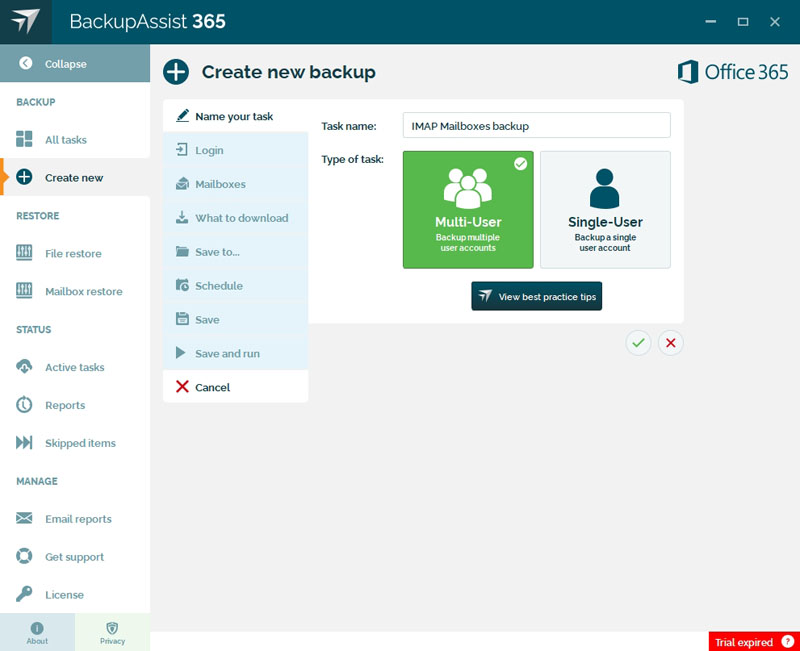
This step is used to configure the mail server and provide credentials for the mailboxes.
To configure the IMAP mail server login:
If you chose Multi-User, you can provide the authentication information in the next step.
The screenshot below is for Multi-User. For Single-User, there will be username and password fields.
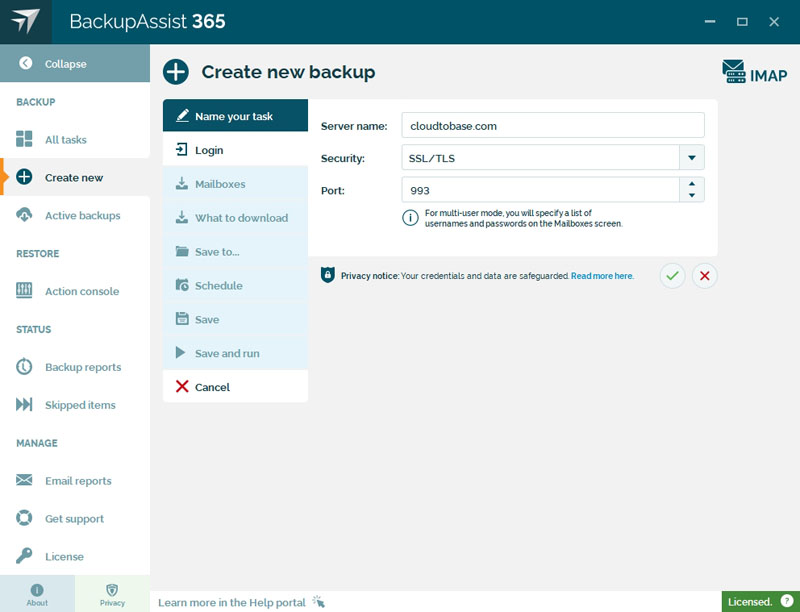
This step is for Multi-User tasks.
To backup up multiple mailboxes:
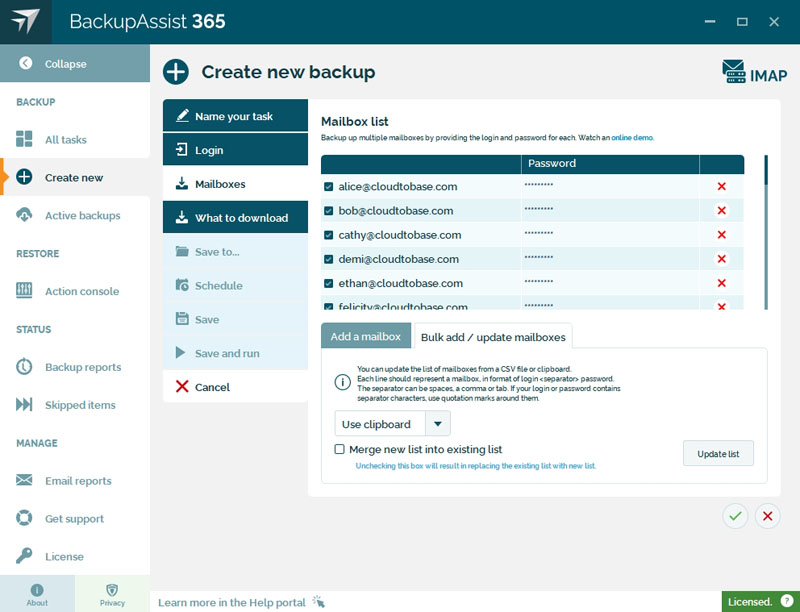
By default, all mail items are backed up. This can result in a significant amount of data and impact the storage required and how long the backup takes to run. In this step, you can limit the mail items backed up to those that fall within a date range. For example, you can set it to only back up mail items that were created in the last year.
To limit the items backed up to a date range:
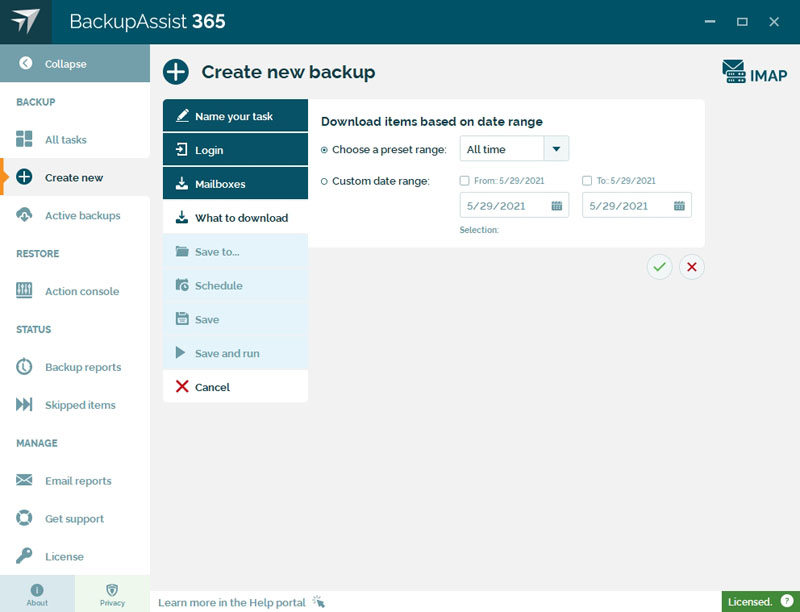
Where you store your backups is an important consideration. The location should be secure and have room for the backups to grow as more data is backed up.
To set the backup destination:
Network folder allows you to use a network share or NAS device and may require the credentials of an account with access to that folder.
Note: While a network share is convenient, if it's not set up with adequate security measures it can pose a data breach risk. To create a best practice network destination, read our Backing up to Network Share on the BackupAssist 365 guides page.
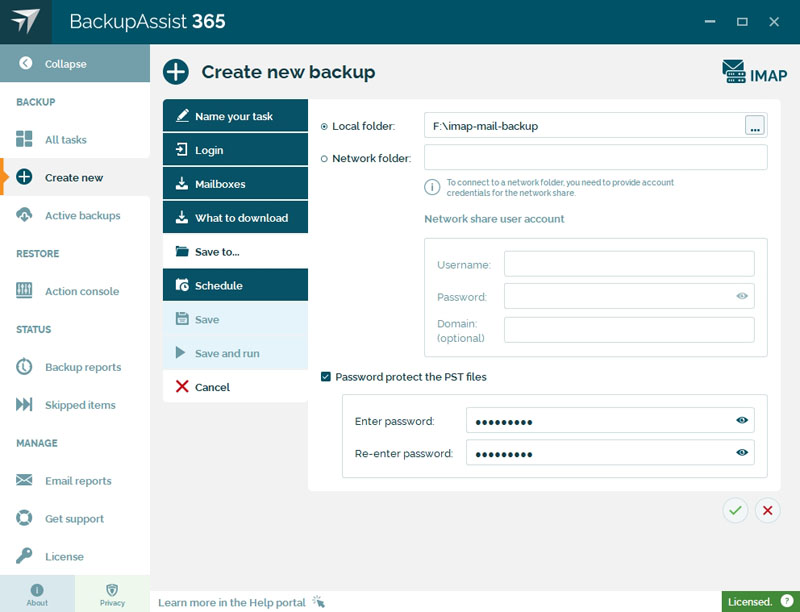
It's best to run the backup task when users are not using their email, so by default the task will start at midnight. You can use the Maximum run time options to stop the backup task from running at a time when users are accessing their mailboxes.
To set up your backup schedule:
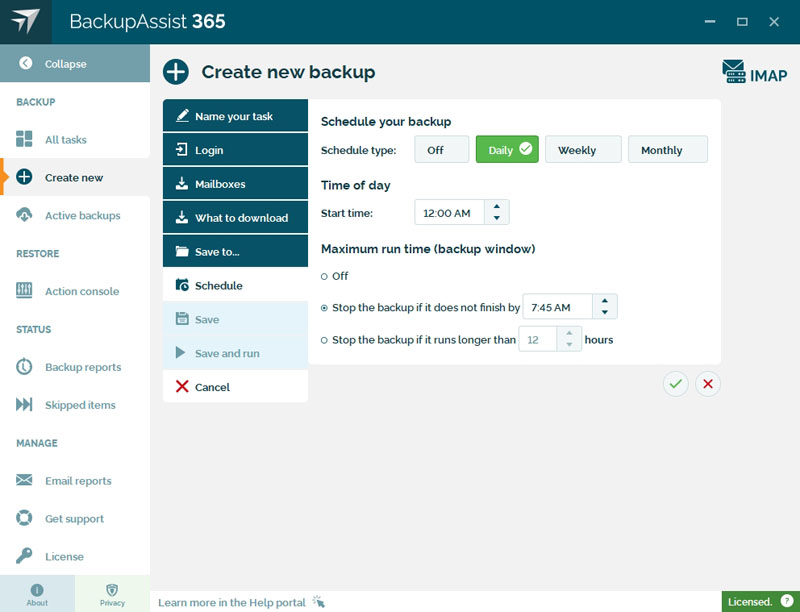
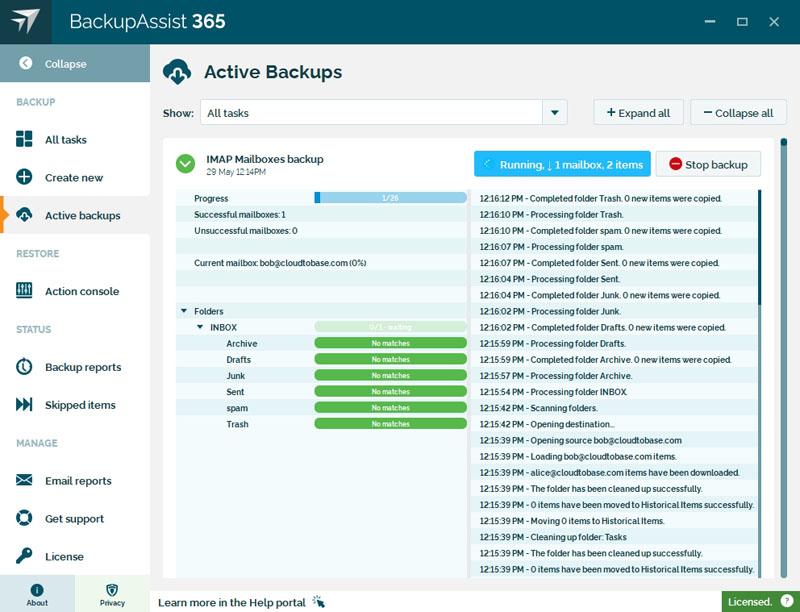
Note: BackupAssist 365 backs up changes to the mailboxes since the last time the backup task ran. The first time it runs however, the task will back up all data and take longer to run. For this reason, you may want to run the first backup manually to ensure it runs as expected and to ensure that it does not impact the users.
Did you find this helpful?
Sorry about that
Why wasn't this helpful? (check all that apply)
Thanks for your feedback.
Want to tell us more?
Support requests are not logged from this dialog. If you require technical assistance, please contact support.
Great!
Thanks for taking the time to give us some feedback.
Great!
Thanks for taking the time to give us some feedback.


